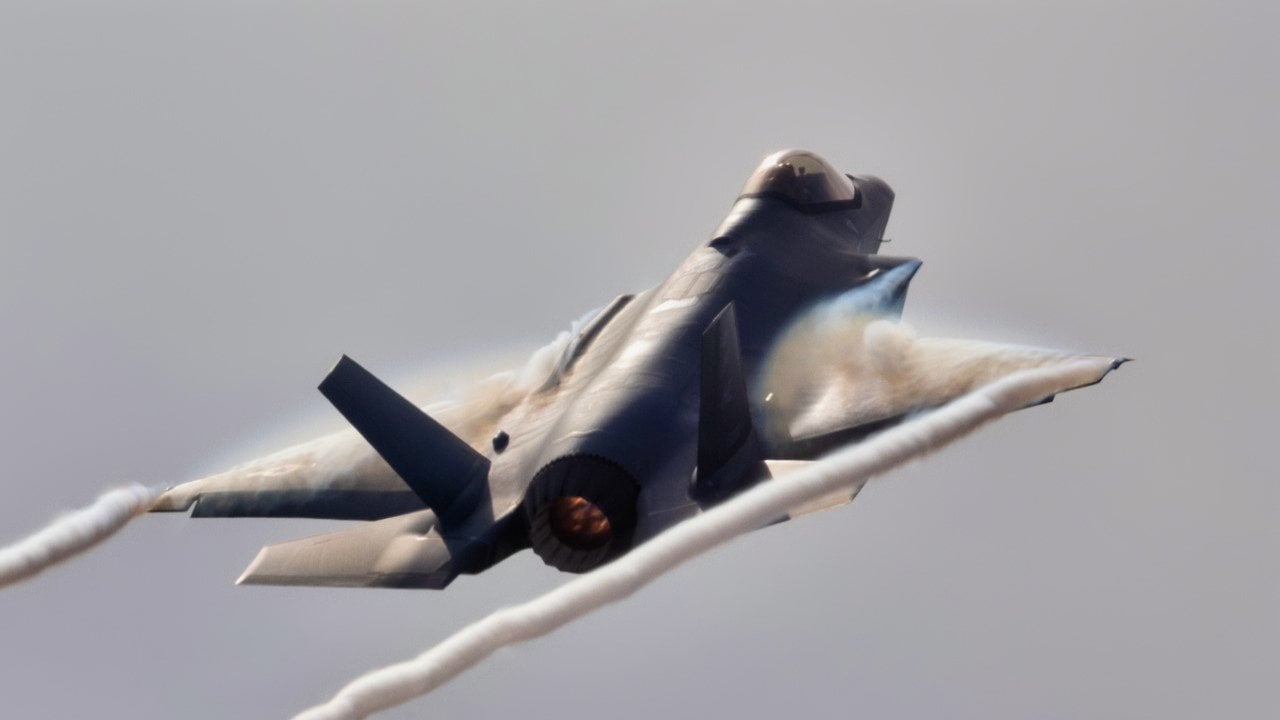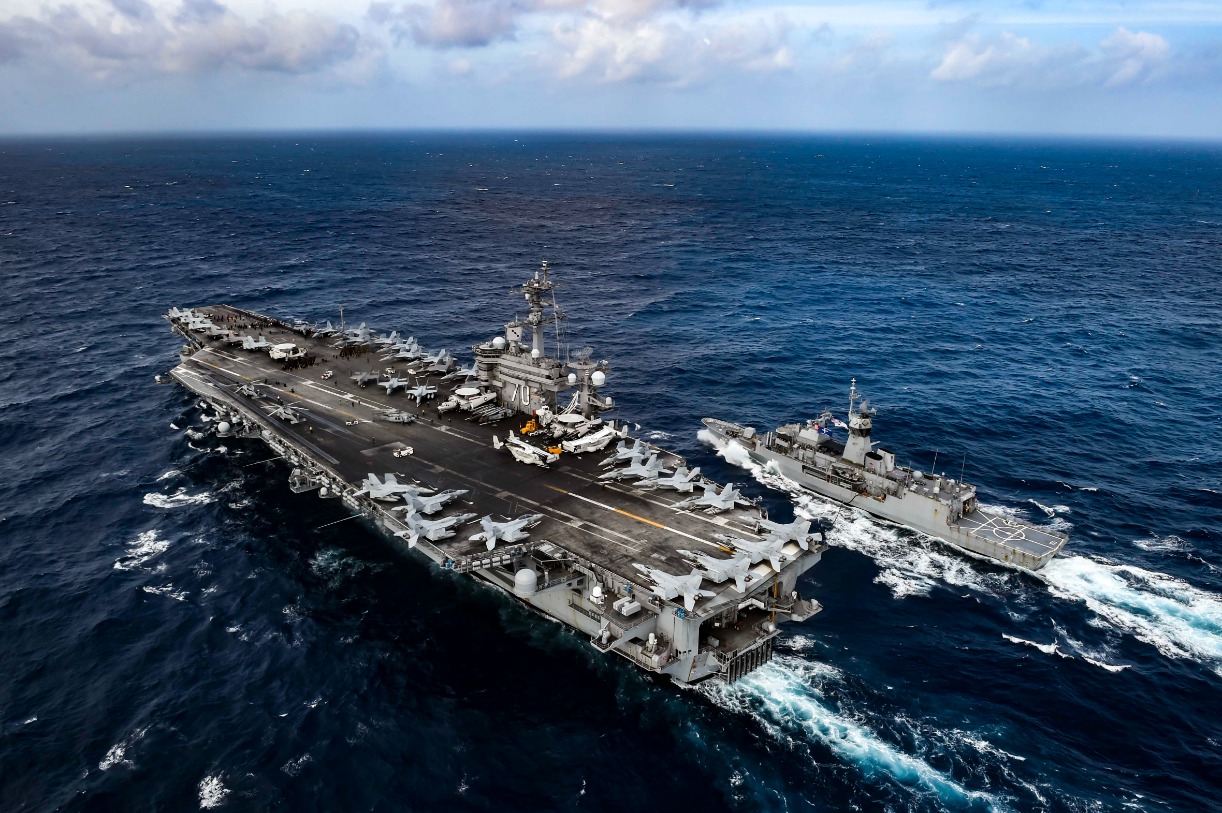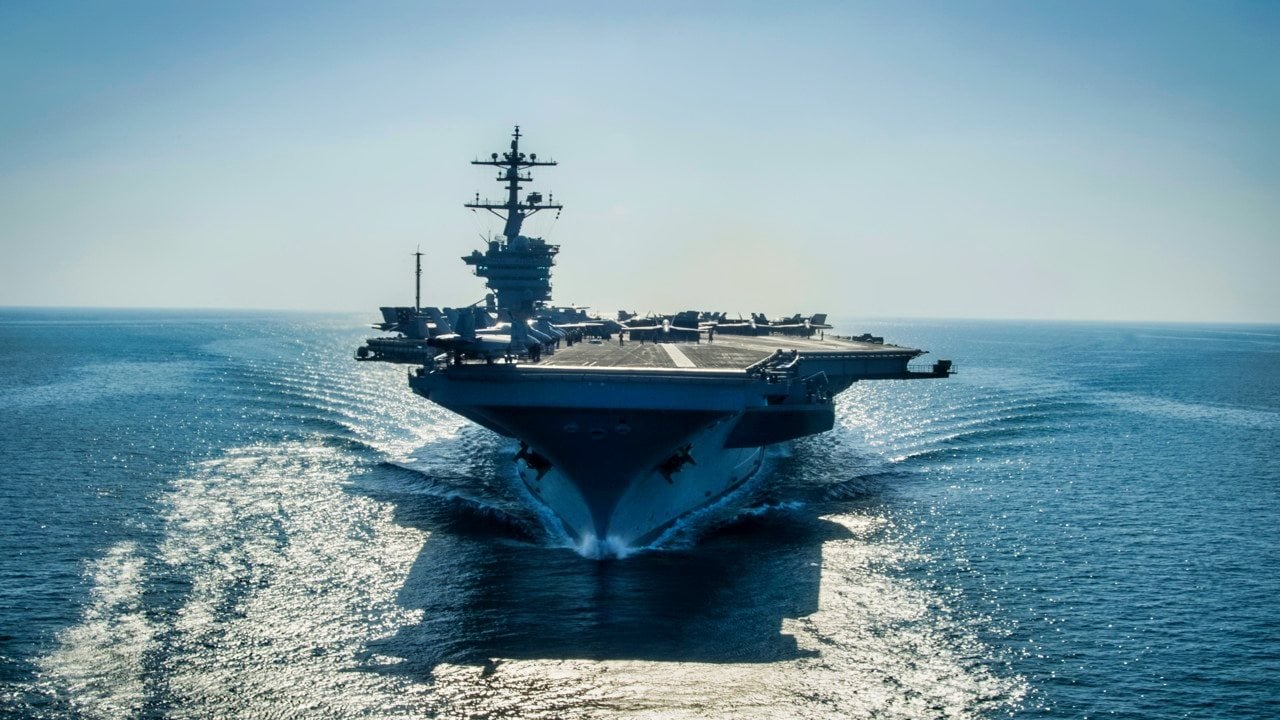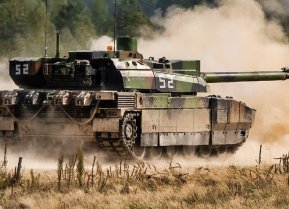USS Carl Vinson: The Nimitz-Class Aircraft Carrier Built to Strike Anything
The crew of the USS Carl Vinson aircraft carrier certainly knows the F-35, as well as any sailors in the U.S. Navy. The nuclear-powered supercarrier was deployed twice to the Western Pacific in 2017 and 2018. It was the first flattop to operate with the Lockheed Martin F-35C Lightning II tests during the Rim of the Pacific 2018 exercise.
The United States Navy’s Carrier Strike Group (CSG) 1, led by its flagship, the Nimitz-class aircraft carrier USS Carl Vinson (CVN-70) took part in a trilateral maritime exercise with the Japan Maritime Self-Defense Force (JMSDF) and the Republic of Korea Navy (ROKN), to demonstrate a commitment to bolstering regional security and stability in the Indo-Pacific.
This year also marked the 71st anniversary of the U.S.-Republic of Korea Mutual Defense Treaty of 1953, and more than 70 years of partnership with Japan since the 1951 Security Treaty between the U.S. and Japan.
During the recent three-day event, the three maritime forces sailed together and conducted advanced maritime communication operations, maritime interdiction operations training, air combat drills, staff exchanges, and integration. The allied forces had last trained together in Nov. 2023.
"Our strike group welcomes the opportunity to train again and further build on our capabilities as a combined force with maritime forces from Japan and the Republic of Korea," said Rear Adm. Carlos Sardiello, CSG-1 commander. "Sailing and flying together safely alongside our allies demonstrates our commitment to improving information sharing and working together effectively, to enhance our ability to coordinate on maritime domain awareness and other shared security interests."
Meet the Carl Vinson Aircraft Carrier
The United States Navy's third Nimitz-class supercarrier was launched in 1980 and officially entered service in 1983. As with other carriers in her class, CVN-70 can carry more than 65 fixed and rotary-wing aircraft, while she can travel more than 5,000 nautical miles in less than seven days in support of national tasking.
The Nimitz-class supercarrier is named for the late Rep. Carl Vinson (D-Georgia), who represented his state in the House of Representatives for 51 years. He earned the nickname "swamp fox" and "the Admiral" due to his interest in U.S. naval affairs. Rep. Vinson served as chairman of the House Naval Affairs Committee in 1931 and played a pivotal role in guiding the U.S. Navy through the Second World War and the early Cold War. He was a strong supporter of the "Two Ocean Navy Act," which dramatically increased the naval budget by 70 percent.
Though the late Rep. Vinson was never in battle, the carrier named in his honor has a notable combat record.
CVN-70 was deployed during Operational Desert Strike, Operation Iraqi Freedom, Operation Southern Watch, and Operation Enduring Freedom. The warship has earned multiple Battle Effectiveness Awards – or Battle "E" – for its role in naval operations in 1990, 1996, 1998, 2001, 2004, 2011, 2015 and 2018. Carl Vinson has been bestowed other awards including the Navy Unit Commendation, Meritorious Unit Commendation, and Sea Service Deployment Ribbon.
A Powerful Airwing
The flattop's current embarked airwing includes the Block III version of the Boeing F/A-18E/F Super Hornet and the Lockheed Martin F-35C Lightning II, while the warship also carries two squadrons of Block II super Hornets and a squadron of EA-18G Growler electronic warfare aircraft.
USS Carl Vinson also is embarked with the Northrop Grumman E-2D Hawkeye airborne early warning and control aircraft as well as Sikorsky MH-60R/S helicopters.
USN Rear Admiral Carlos Sardiello, commander of Carrier Strike Group One (CSG1) told Flight Global last year that having the latest fourth- and fifth-generation fighters serving together offers a "very capable combination."
That is a sentiment shared by Captain Matthew Thomas, commanding officer of CVN-70.
"We rehearse on a regular basis to ensure that we are ready, relevant and able to conduct our full range of missions," explained Thomas. "Having both fifth-generation F-35s and Block III Super Hornets is a great additive capability to our air wing. They bring a lot of avionics capabilities that make us more capable and lethal."

Operating With the F-35
The crew of the USS Carl Vinson certainly knows the F-35 as well as any sailors in the U.S. Navy. The nuclear-powered supercarrier had been twice deployed to the Western Pacific in 2017 and 2018 respectively and was the first flattop to operate with the Lockheed Martin F-35C Lightning II tests during the Rim of the Pacific 2018 exercise.
CVN-70 successfully completed several certifications for the F-35C, including flight deck certification (FDC) and carrier air traffic control center (CATCC) certification. During a 17-month-long extended maintenance period that was completed in September 2020, the carrier received major upgrades in support of the fifth-generation aircraft. Carl Vinson then became the first aircraft carrier equipped to support both the F-35C Lightning II and CMV-22 Osprey.

Upgrades included enhanced jet blast deflectors able to take the increased heat generated by the F-35C and the addition of the Autonomic Logistics Information System (ALIS), the new computer network that supports the unique maintenance and tactical operations functions of the advanced aircraft.
In March 2021, a "proof-of-concept" exercise was conducted to highlight how a deployed carrier could receive the critical parts to successfully maintain the U.S. Navy's carrier variant of the F-35 Lightning II fifth-generation jet fighter.
In February 2022, USS Carl Vinson returned to her homeport of San Diego after a six-and-a-half-month deployment to the Indo-Pacific. It was the United States Navy's first deployment of the "air wing of the future," as Carrier Air Wing 2's F-35Cs concluded its first-ever operational deployment. During that time, the air wing conducted more than 15,000 flight hours and more than 15,000 combined carrier arrested landings and catapult launches.

Carrier Strike Group 1
CSG-1 departed San Diego on Oct. 12, 2023, for a scheduled deployment to the Western Pacific. Since entering the U.S. 7th Fleet area of operations, the strike group has participated in the Multi-Large Deck Event and Annual Exercise 2023 in the Philippine Sea. Those exercises provided opportunities for the warship and its crew to collaborate with allied forces such as the Royal Australian Navy, Royal Canadian Navy, and JMSDF to further strengthen regional cooperative efforts.

CSG-1 is a multiplatform team of ships and aircraft, capable of carrying out a wide variety of missions around the globe from combat missions to humanitarian assistance and disaster relief response. CSG-1 is currently deployed to the U.S. 7th Fleet area of operations in support of a free and open Indo-Pacific.
Author Experience and Expertise: Peter Suciu
Peter Suciu is a Michigan-based writer. He has contributed to more than four dozen magazines, newspapers, and websites with over 3,200 published pieces over a twenty-year career in journalism. He regularly writes about military hardware, firearms history, cybersecurity, politics, and international affairs. Peter is also a Contributing Writer for Forbes and Clearance Jobs. You can follow him on Twitter: @PeterSuciu. You can email the author: [email protected].
All images are Creative Commons.


